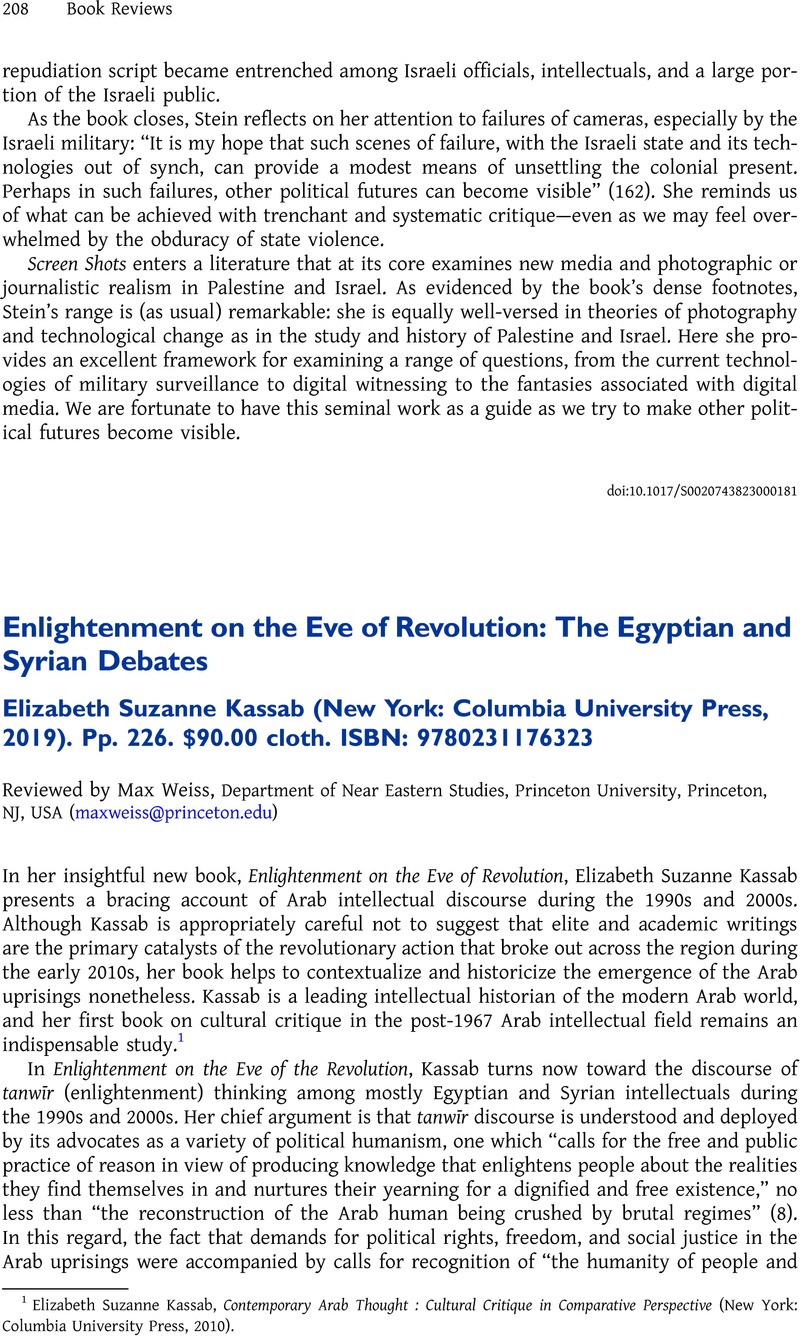No CrossRef data available.
Published online by Cambridge University Press: 11 April 2023

1 Kassab, Elizabeth Suzanne, Contemporary Arab Thought : Cultural Critique in Comparative Perspective (New York: Columbia University Press, 2010)Google Scholar.